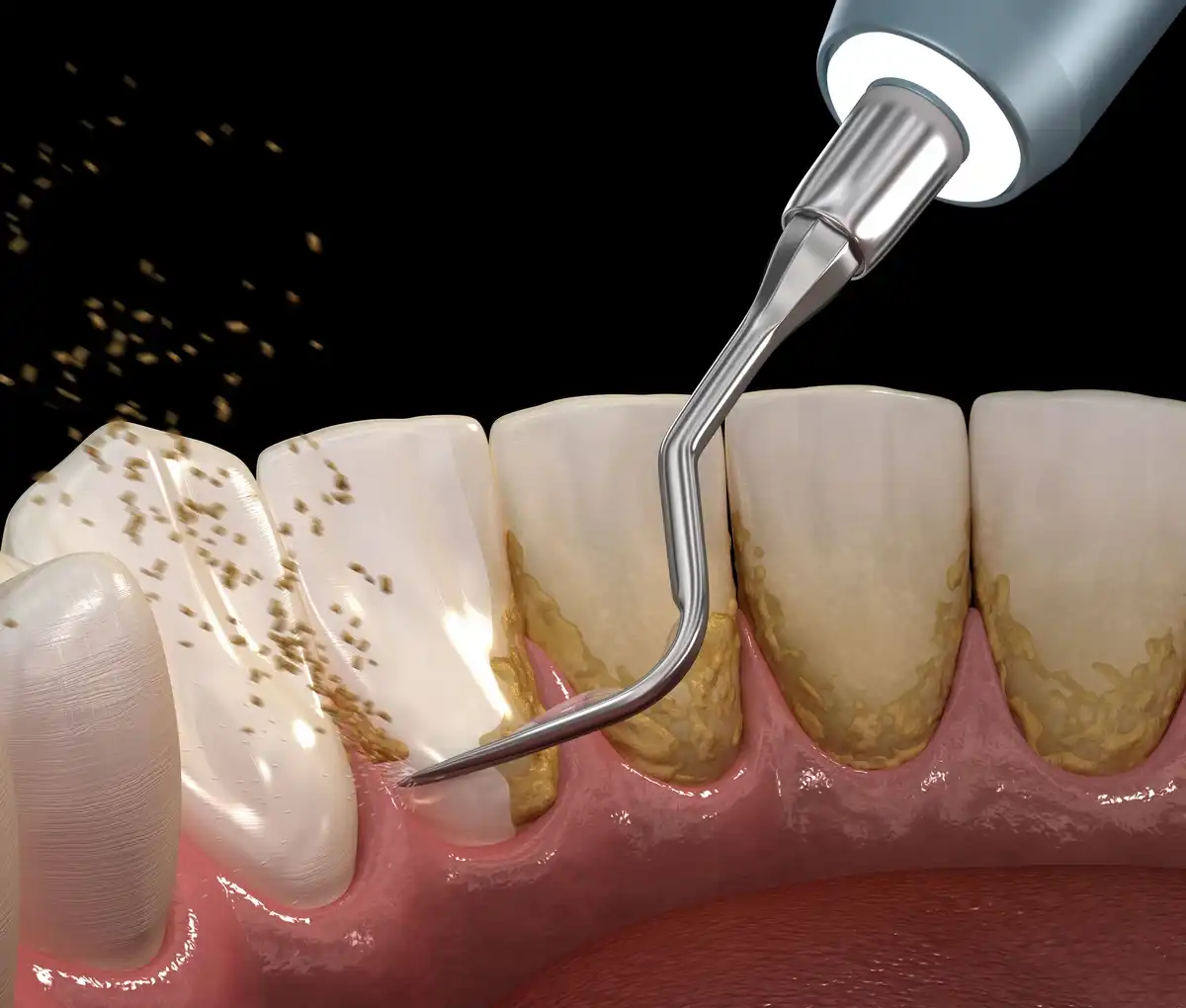What is Tartar & How to Remove It


Tartar — or dental calculus as we refer to it in private practice — is a hard, cement-like buildup that forms on the surface of teeth. In a nutshell, all tartar is, is calcified plaque (teeth biofilm) that isn’t cleaned off regularly enough and starts to calcify. While you can easily brush away plaque, teeth with tartar on them aren’t something you can clean at home. Figuring out how to remove tartar can be challenging since the calcified deposits are next to your delicate gum tissues or even as far down as the roots of your teeth.
How Plaque and Tartar Affect Teeth And Gums
Whenever you’re talking about dental plaque, teeth and gums are extremely sensitive to the bacterial-loaded biofilm. It’s no different when it comes to tartar. The only difference is that with dental calculus, you can’t brush it off your teeth. Instead, the rock-like buildup harbors more bacteria in your mouth and compounds the oral infection.
Plaque and tartar can lead to a cyclic infection that ultimately results in gum disease, tooth mobility, and loss. While dental plaque-induced gingivitis is reversible with improved home care after a couple of weeks, tartar buildup is more of a “permanent” problem unless you have it professionally removed by your dental provider.
Plaque Vs. Tartar
When you have plaque, teeth have a filmy-looking white residue that can easily be wiped away. What is dental plaque exactly? Bacterial byproducts. Germ poop, basically. That’s why we in dentistry stress brushing and flossing so often because plaque is toxic to teeth and gums. And if it’s not removed thoroughly, it only takes about 24 hours for the plaque to start calcifying into tartar.
Even though plaque is usually white, it can also take on other colors depending on the food you’re eating and how long it’s been on your teeth. Sometimes dental plaque looks yellow. If you wipe a little off with your fingernail, it will have a slimy or sticky texture.
Tartar is a gradual accumulation of calcified plaque that is semi-permanently fused to the tooth. By semi-permanently I mean that you cannot clean it off on your own, but your dentist or hygienist will know how to remove tartar with special instruments.
How To Tell If You Have Tartar Buildup?
Not all tartar buildup is visible. Usually, if it is, it’s going to be on your lower front teeth. Plaque and tartar tend to be heaviest alongside our major saliva glands; there’s one in the floor of your mouth in front of your tongue and then a pair on the outside of your upper back molars, next to your cheeks. Tartar is most visible when it’s dry (which is why your dentist or hygienist is sometimes blowing air on your teeth) as opposed to saliva-saturated. Look carefully between your bottom front teeth or use a mirror to see just behind them. Typically, the dental calculus will be just next to the gum line or right between your teeth. You may not even be able to work floss down into those areas if the tartar is really heavy. At times it can form a smooth “shelf” that totally covers the backs of your bottom front teeth.
Subgingival tartar — that’s the buildup below your gums — is something your hygienist will screen for with a special instrument or by using dental X-rays. Your X-rays may look like the teeth have small spurs coming out on either side. All that is, is tartar that’s stuck to them.
How To Remove Tartar At Home?
Do NOT attempt to remove tartar or dental calculus on your own at home. No matter what DIY tartar removal kit you see advertised online or in the drugstore (yes, they sell them there) resist the temptation to buy one. They look similar to the scalers that your hygienist uses in the dentist’s office, but they’re not the same thing. You’re basically buying a metal toothpick. One slip or scrape in the wrong direction and you could have permanent gum damage. In fact, scraping too hard on your teeth could actually burnish away the tooth enamel in that area. Leave the “scraping” to the professionals who spend 2-4 years training how to do it safely.
Sometimes tartar will still be soft enough (while the dental plaque is still calcifying) that you can remove parts of it with floss. But if the floss catches and isn’t able to move up and down the side of your tooth, don’t try to force it out. Doing so could just hurt your gums. Instead, pull it out through the side.
The best way to remove tartar is to just prevent it from forming to begin with.
How Can I Prevent Tartar Buildup?
Tartar buildup is totally preventable in most cases. The key is to disrupt the soft plaque on your teeth at least a couple of times a day. Since it takes 24 hours for the plaque to calcify, you need to be flossing between teeth once a day minimum. Otherwise, a thin layer of tartar will gradually build up for every day that’s missed.
Pay close attention to your gum line. Angle your toothbrush toward the gums to target the “sulcus” (edge of the gums next to your teeth) in particular. Spend a minimum of two minutes brushing and if possible, go ahead and invest in an electric toothbrush since it will be way better at disrupting dental plaque than a manual one will. Then make sure you’re flossing with the strand wrapped snuggly in a “C” shape around the side of each tooth, rubbing up and down several times before moving to the next tooth. It’s fine for the floss to gently slip under the gums; in fact, you want it to.
And last but not least, schedule a dental cleaning a minimum of twice per year. The longer you go between cleanings, the more tartar you’re going to have on your teeth. Even with excellent oral hygiene, there will be a place here and there where tartar starts to form. Professionally having your dental calculus removed will help prevent the onset of something more severe (like periodontal disease.)
When To Talk To Your Doctor
Let’s say that — hypothetically — you haven’t been to the dentist in over a year or two. You may still be wondering “What is dental plaque?” Or “What is tartar?” Teeth cleanings may be the last thing on your mind. But if you’re at the point where you can physically see the buildup on your teeth, you’re past the point of needing to see a dentist.
Without professional intervention, all of that dental plaque and tartar buildup is going to physically destruct the gums and bone that hold your teeth in place. Especially if you’re already seeing symptoms of gum disease, gum recession, or bleeding.
If you see the buildup, you need to call your dentist. It’s not an emergency, but you definitely ought to schedule an exam, periodontal assessment, and professional cleaning within the next couple of weeks, tops. Waiting too long could cost you your teeth.
Dental Calculus Recap
Dental calculus (aka “tartar”) is the hard buildup on your teeth that comes from soft plaque that calcifies if it isn’t removed with brushing and flossing every day. It only takes about 24 hours for plaque to calcify into tartar. Don’t attempt to clean it off yourself. If you can see the buildup or it’s been longer than six months since your last cleaning, call your dentist to schedule a checkup. Waiting too long could lead to so much tartar around your tooth roots that they detach entirely from the rest of your mouth (I promise it’s not a scare tactic; it’s the plain and simple truth.)

Make your inbox smile!
Subscribe






